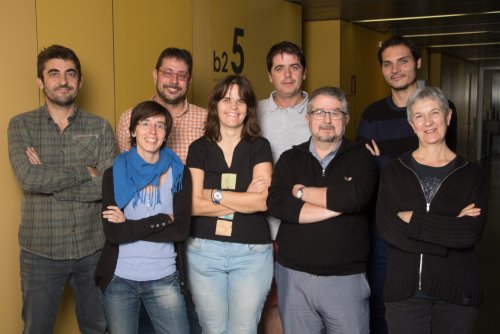A model led by local researchers on strategies in breast cancer screening receives the highest rating among 18 proposals from around the world
The proposal concludes that it is necessary to develop individualized measures to predict the risk of suffering from the disease and reduce adverse effects and costs
A review of 18 models of strategies in breast cancer screening has assessed the proposal made by the Systems biology and statistical methods for biomedical research Group, of the University of Lleida (UdL) and the Biomedical Research Institute of Lleida (IRBLleida), and by the Research Group in Economic Analysis and Statistics in Health (GRAEES) of the Rovira i Virgili University.
The proposal develop individualized measures to predict the risk of breast cancer is determined. The model proposes to base strategies for diagnosing the disease according to risk, a proposal that allows reducing costs and adverse effects to people with false positive results or in cases of overdiagnosis.
The review of the models, carried out by a researcher at the Center for Health Sciences in Munich, published in December 2017 in the journal BMC Health Services Research, concludes that future simulation models of breast cancer screening should integrate useful parameters in the strategy, such as those proposed by the Lleida researchers, in which they made an economic evaluation and the relationship between benefits and harms of the screening strategies. In addition to assessing the quality of the article, the review evaluated whether the simulation models integrated all the relevant phases of breast cancer health care (detection, diagnosis and treatment), if the quality of life of women was considered, and if the costs of all the assistance stages were well measured.
A simulation model is a scientific method to create and analyze hypothetical scenarios that try to predict the results that would be observed in the real world. Simulation models allow proposing alternatives for improvement, providing relevant data to develop protocols and programs for the early detection of diseases. These models also allow to have knowledge about risk classifications, biases in the diagnoses, as well as an economic evaluation.
The results of the simulation study conducted by the local Research Group were published in 2014 in the journal PLoS One. The study estimated the benefits, adverse effects and costs over time of 2,624 strategies for early detection of cancer. of breast using data from population registers in Spain and early detection programs for breast cancer, as well as clinical studies. "Our study wanted to be a global evaluation of the impact that a new screening paradigm would have on benefits, costs and adverse effects, instead of a detailed guide on how a personalized selection should be made", explained Ester Vilaprinyó, researcher of the Research Group .
Four risk groups were defined-low, moderate-low, moderate-high, and high-based on breast density, family history of breast cancer, and personal history of breast biopsies. Risk-based strategies were obtained by combining the periodicity of the examination (annual, biennial, triennial and quinquennial), the initial ages (40, 45 and 50 years) and the final ages (69 and 74 years) in the four risk groups. According to the analysis, optimal screening is characterized by five-year or three-year periodicities for the low or moderate risk groups and by the annual periodicity for the high-risk group. "We must develop precise measures of individual risk and work on how to implement selection strategies based on risk," the article concludes.
The review, which has followed the protocol of the PRISMA guide of systematic reviews, assessed 40 items that, according to the guidelines of good practice, should have been considered in the simulation models and should have been explained in the publication of the work.
Currently, this Research Group is carrying out a study of acceptability and feasibility of personalized early detection of breast cancer within the National Health System. In this study, IRBLleida and UdL researchers from the Arnau de Vilanova University Hospital collaborate with the Early Detection Program of the Health Region of Lleida and the Catalan Health Institute.

According to the review of 18 international works, future simulation models have to integrate useful parameters, such as those proposed by the Research Group






